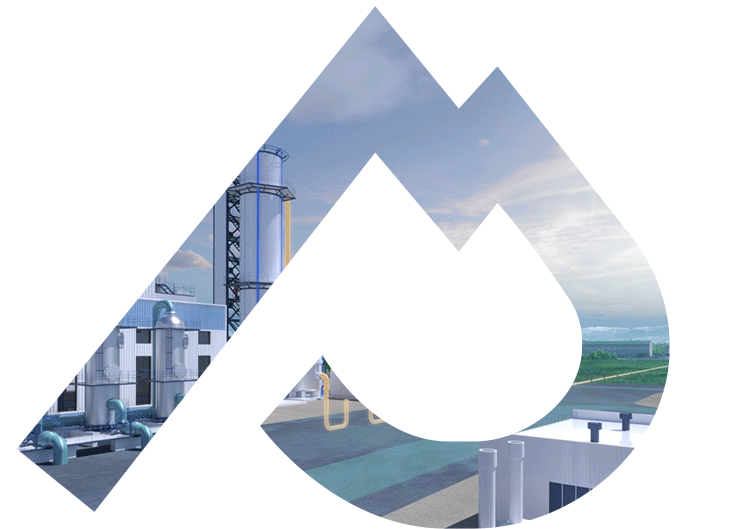
Climatic background:
industry at the heart
of the climate challenge
A climate challenge and targets to reach
The fight against global warming is a central concern. The phenomenon constitutes an environmental threat of decisive proportions for the future of our planet. The main cause of this global problem is the rise in greenhouse gas (GHG) concentrations in the atmosphere, generated particularly by human activities (deforestation, intensive agricultural practices, the burning of fossil fuels etc.).
The drastic reduction of those emissions, of which 80% is CO2, is therefore central to the climate ambitions established by the European Union. The commitment is as follows: to reduce that percentage to 55% (compared with 1990) by 2030 and by 90% between now and 2040, finally achieving complete carbon neutrality by 2050.
In this environmental context, the Energy & Climate Law has recognised the plan at a national scale, and the National Low-Carbon Strategy (SBNC) sets out the pathways to follow, to reduce France’s GHG emissions and carbon footprint. To achieve these objectives, a significant part of the work is focussed on decarbonisation of the industrial sector.
The need for commitment from the industrial sector
The decisive nature of the commitments made in reducing GHG emissions is particularly marked in the secondary sector. Construction and industry alone generate 23% of the country’s greenhouse gas emissions.
A clear environmental challenge
Decarbonising France’s major industries is a major issue, because its success is crucial to reaching the climate targets set by the European Union. The production of materials (cement, lime etc.), metallurgy, chemicals and agribusiness are prime targets for this environmental process and account for 85% of GHG emissions in the industrial sector.
Millions of tonnes of carbon are produced by industry every year, making massive processing measures necessary. To help the climate and remain competitive, industry must decarbonise.
The target is to reduce industrial emissions by 35% compared with 2015 by 2030, then 81% by 2050, by eliminating:
- Fossil CO2 released by the combustion of matter extracted from under the ground (gas, oil, coal);
- Biogenic CO2, resulting from the combustion of organic matter (wood etc.) or fermentation (methanisation);
- Residual CO2, defined as the incompressible carbon emissions that remain after taking action to introduce energy frugality, energy efficiency, and the integration of renewable energies.
A decisive economic lever to safeguard industry
The economic impact is another significant aspect of the decarbonisation policy. Without a profound transition in the sector, changes to the emissions quota trading system (EU ETS) risk leading to industrial offshoring. That regulatory process is aimed at limiting the amount of greenhouse gas released into the atmosphere by industrial plants, aviation and shipping companies, by significantly increasing the cost of producing CO2 emissions.
From 2026, annual free CO2 emissions quotas will be progressively eliminated and industry will have them removed for good in 2034. The “polluter pays” principle is being toughened up, and the purchase price of said quotas could well prove a disproportionate burden on the economic actors concerned, having a direct impact on their profitability and viability. Carbon credits, becoming a commodity in their own right, will be traded on the market and their value will undoubtedly fluctuate exponentially, since demand will be much greater than supply.
Decarbonisation is a major energy transition issue for our industry, as much in terms of protecting employment in a strategic sector, as in maintaining our territory’s competitiveness on the international stage. CCUS chain solutions provide an ideal response to this problem.
